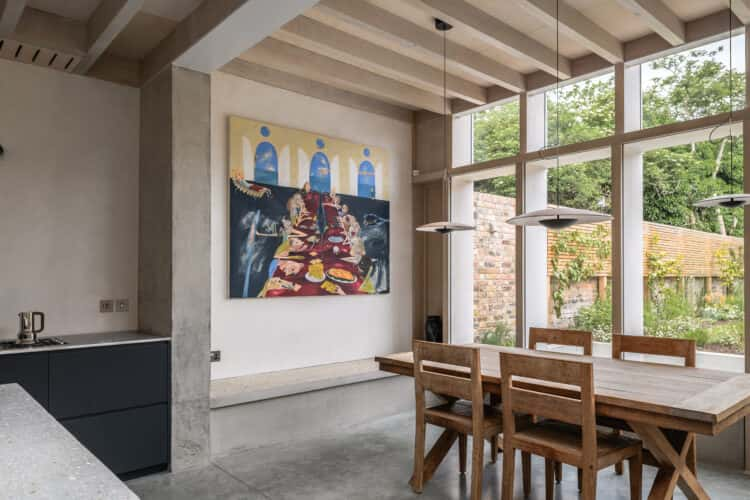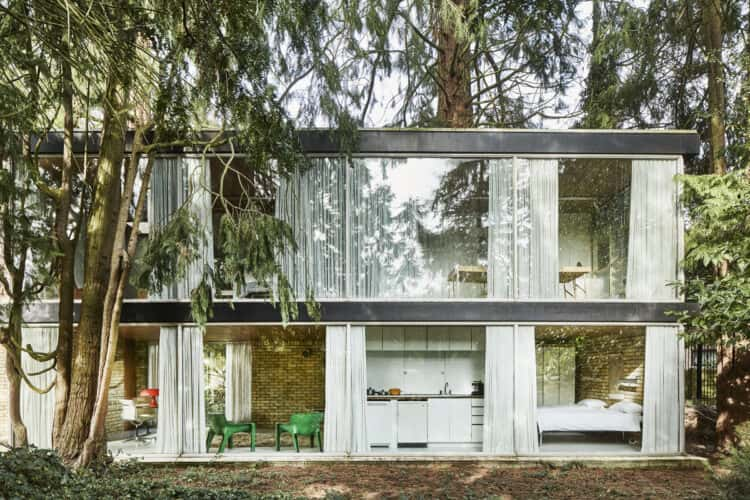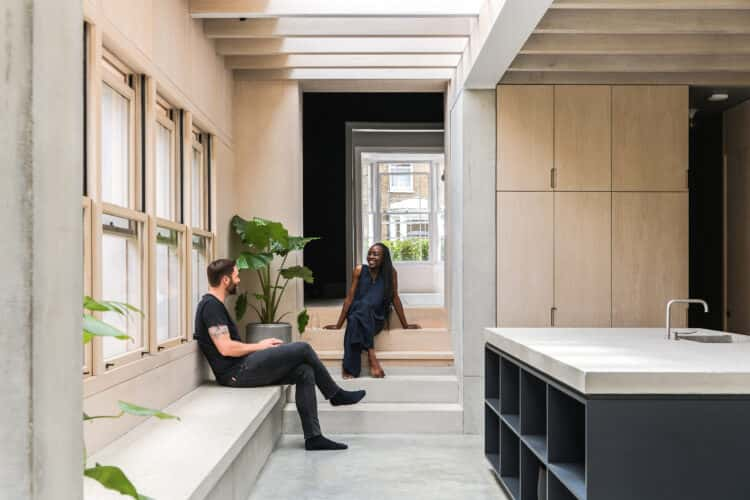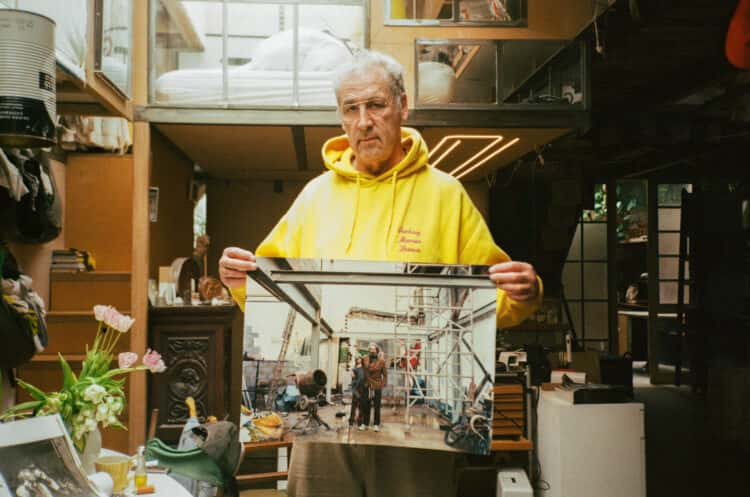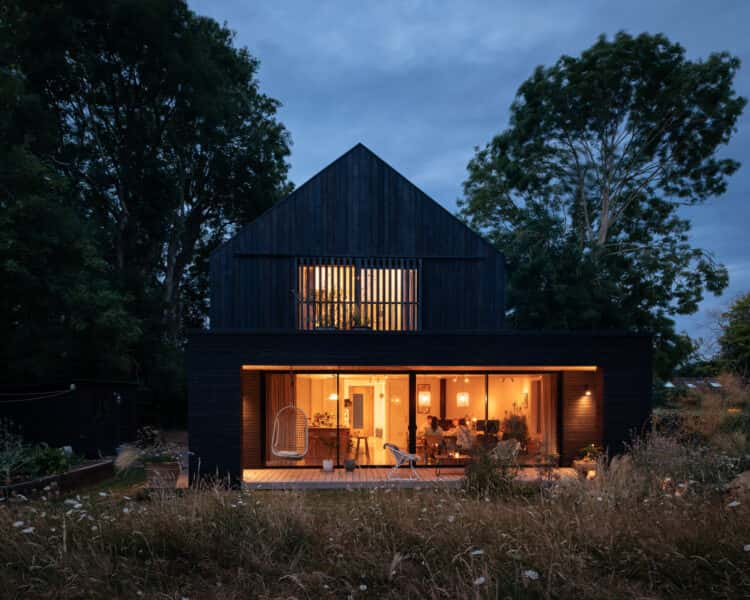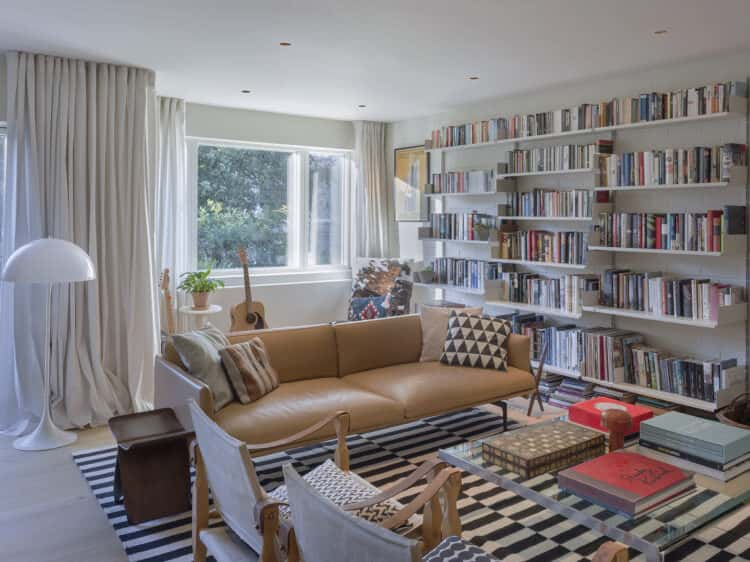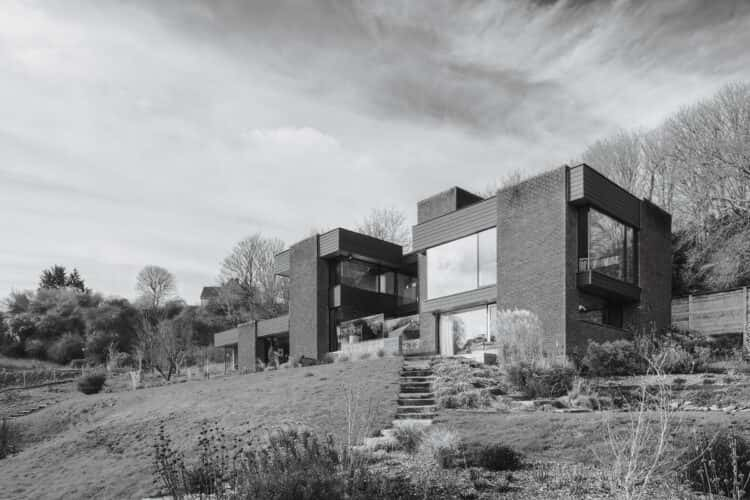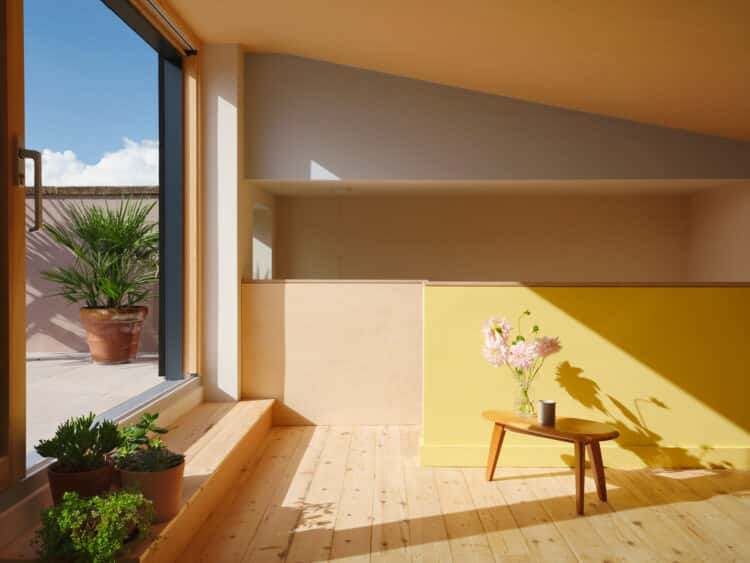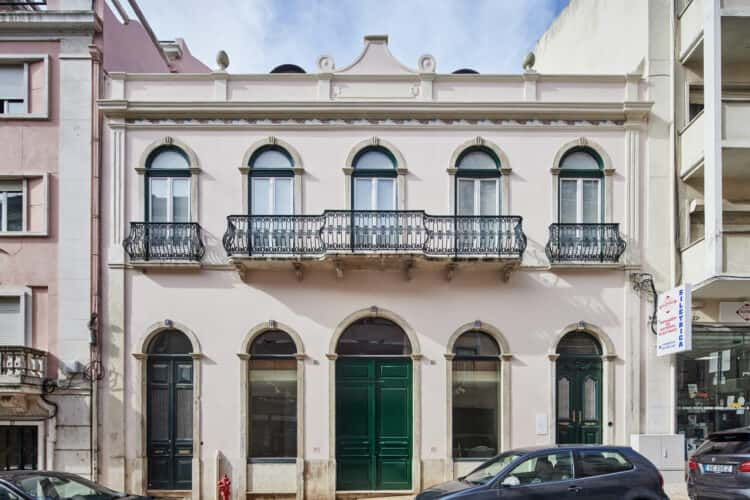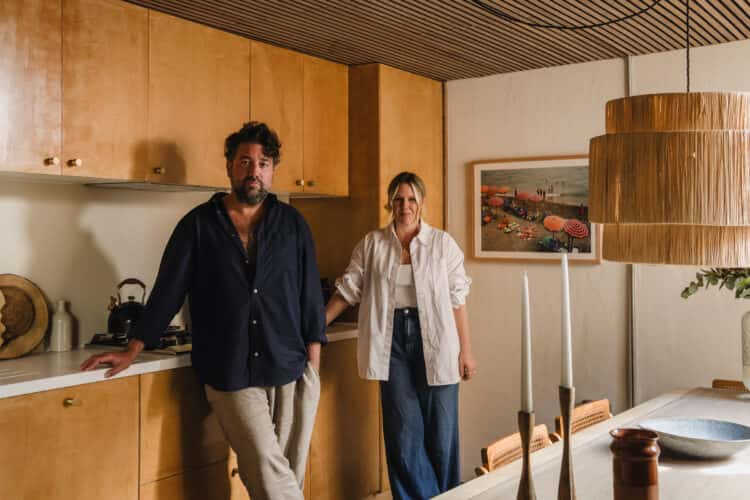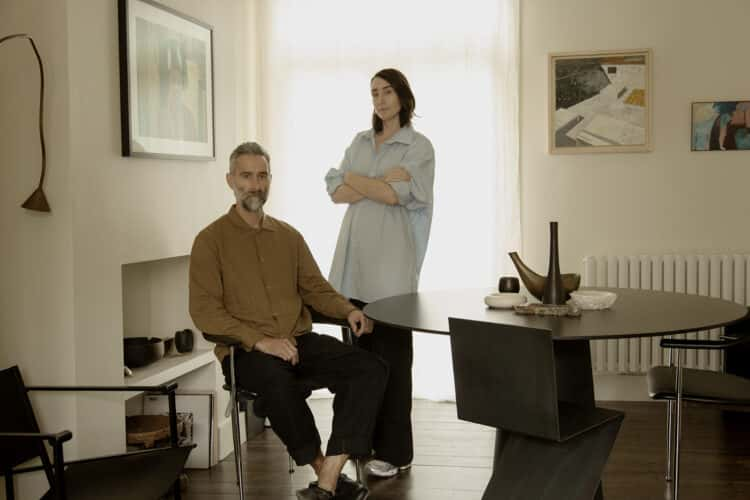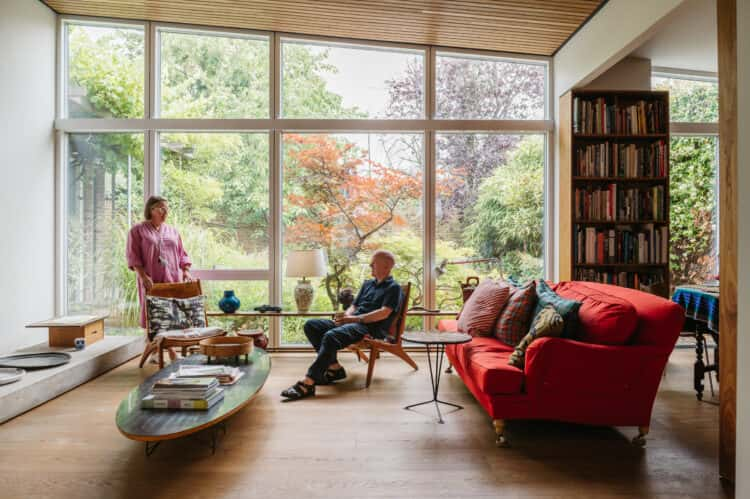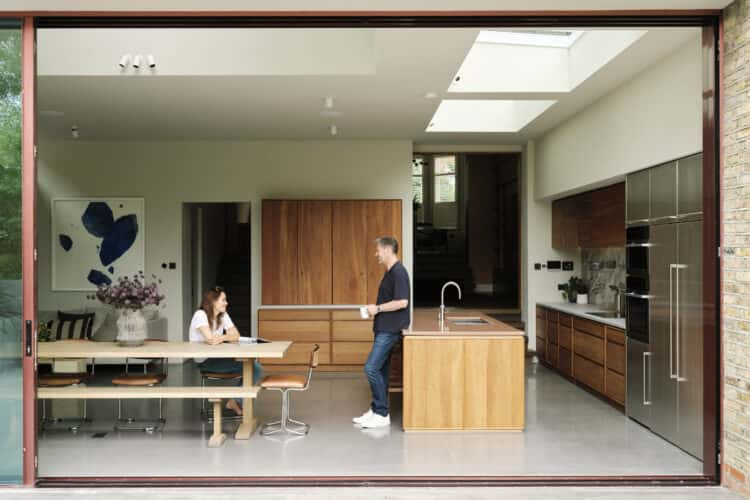Rebecca Layoo and Roman Meyer on life at the brutalist-inspired Concrete Plinth House in London Fields, east London
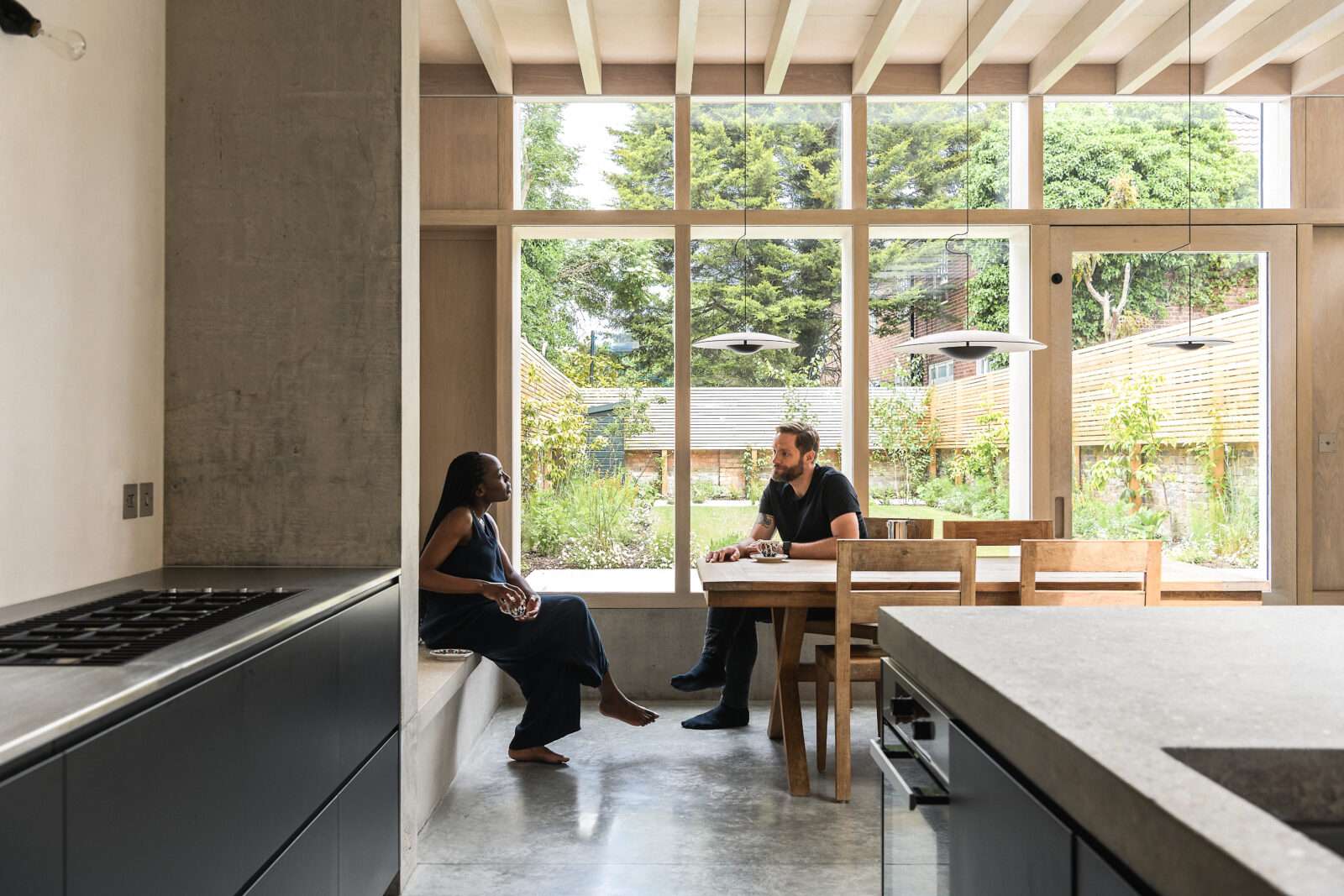
Words Billie Brand
Photography Elliot Sheppard
Their initial brief to design practice DGN Studio was to transform a dark kitchen with oppressively low ceilings into a light-filled space fit for entertaining. The project, which evolved to include renovations of the entire home, lasted 18 months and, in 2020, the aptly named Concrete Plinth House was complete. Here, the couple, who are expecting their first child, discuss their carefully considered kitchen extension, the harmony of oak and concrete and how they plan to adapt the space for family life.
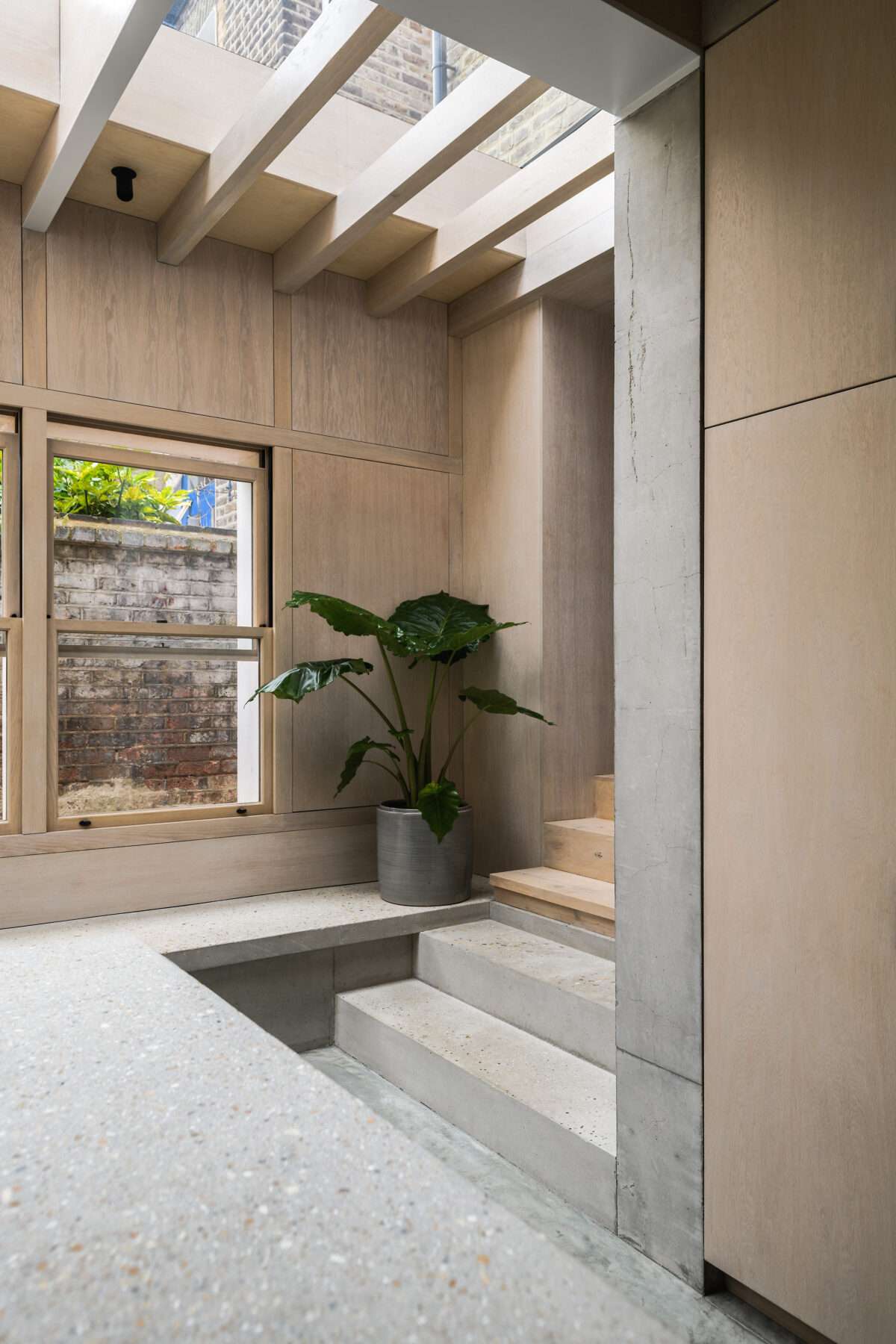
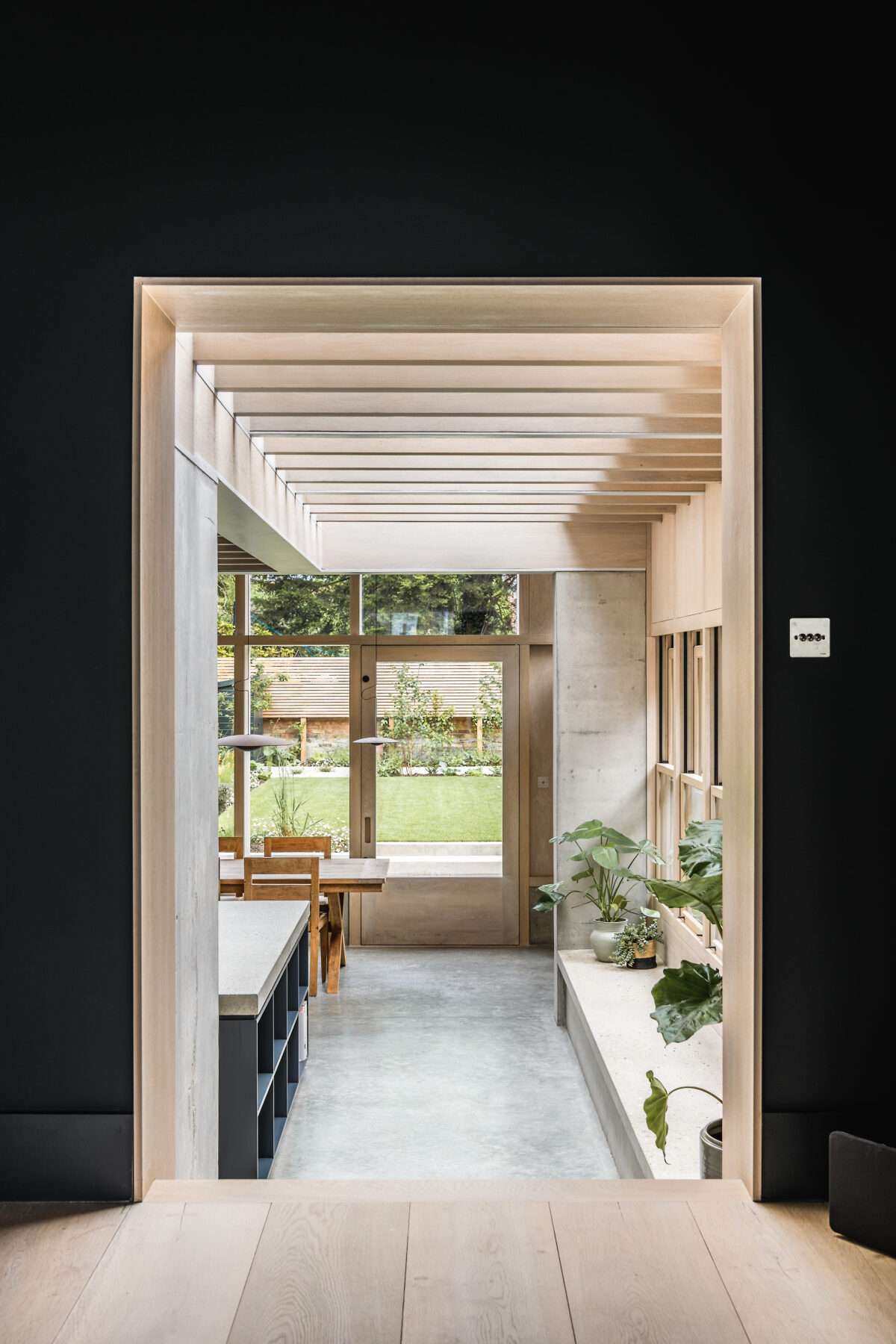
Roman: “We both like brutalist architecture. I was exposed to it at a very early age, and at the time, I didn’t appreciate it for its artistic value, I just thought it’s quite an economical way to build. But, as I got older, it began to appeal to me from an aesthetic standpoint. Concrete as a material is cool because you can shape it to whatever you like. And so, we thought it would why not have our home nod to brutalism.
“We bought the house four years ago and lived here for roughly two years before we started the work. We only moved back in eight or nine months ago.”
Rebecca: “We weren’t specific about what we wanted and were looking in both south east and east London. We’d actually just missed out on a loft in Clerkenwell that we put an offer on. Then this house came up, totally unexpected. It just had a lot of potential. The road is super leafy and it’s next to London Fields, which was a big draw as well.”
Roman: “It was in a bit of a state when we found it, so we knew it was going to be a big project – probably slightly bigger than we bargained for. Initially, we just painted over the wallpaper and put down some new carpets to make it livable.”
Rebecca: “It had 1970s style, smoke-stained wallpaper and carpet. Sadly, most of the original features had gone, but the shutters and some cornicing in the hallways were intact, so we kept those. It had no central heading though, and we lived like that for two years.”
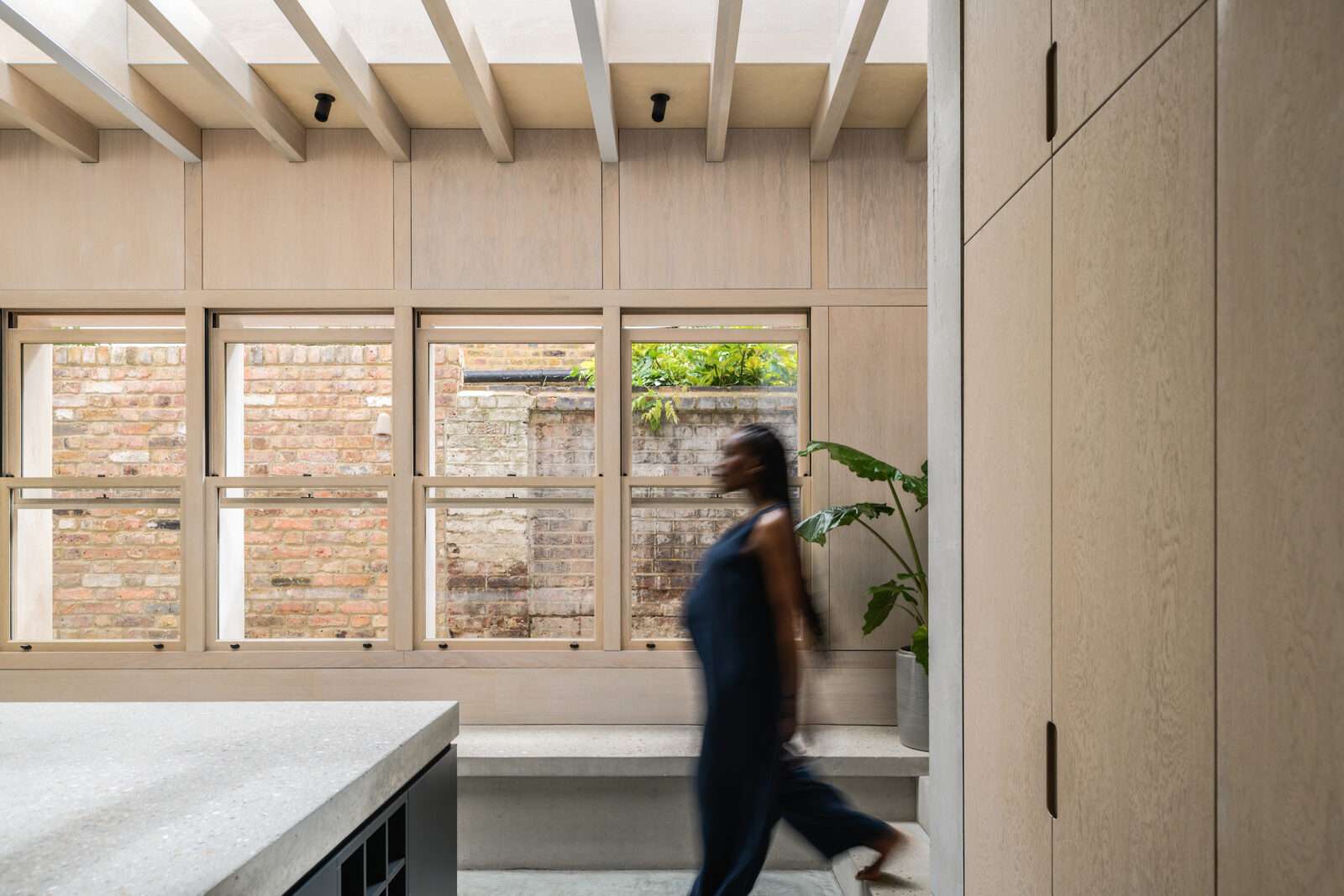
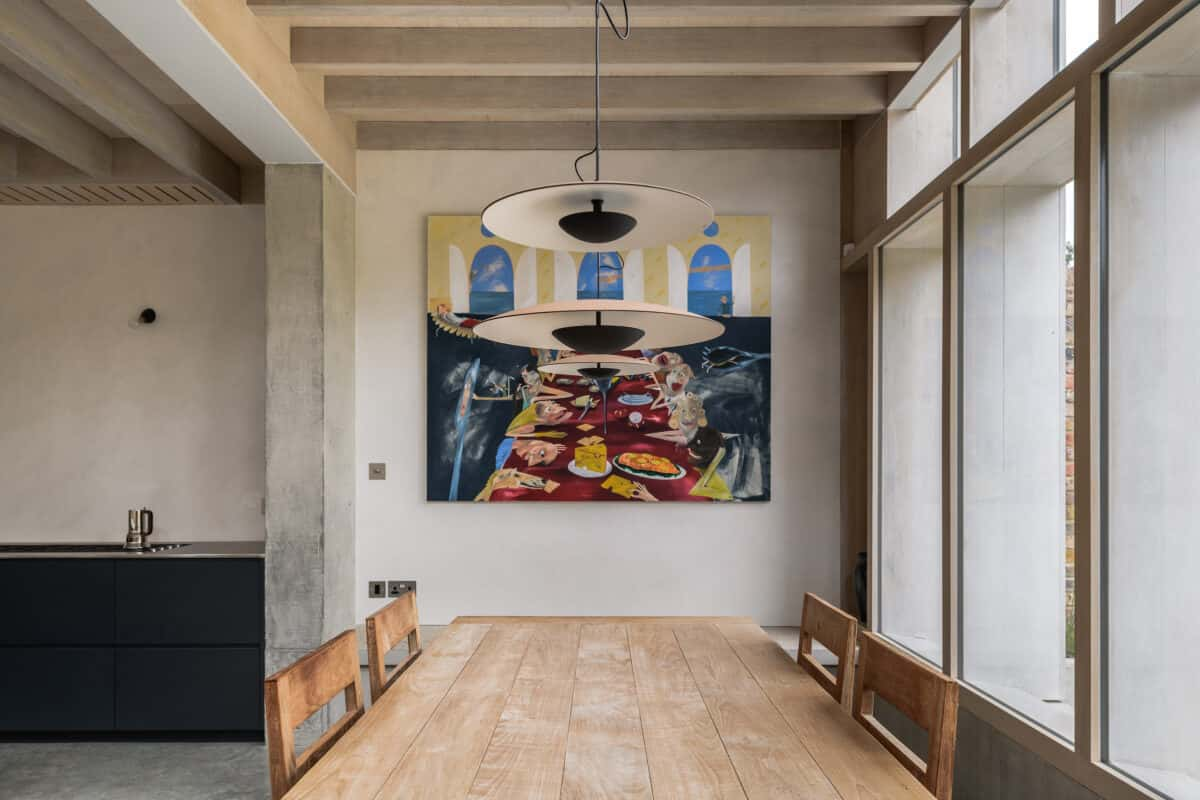
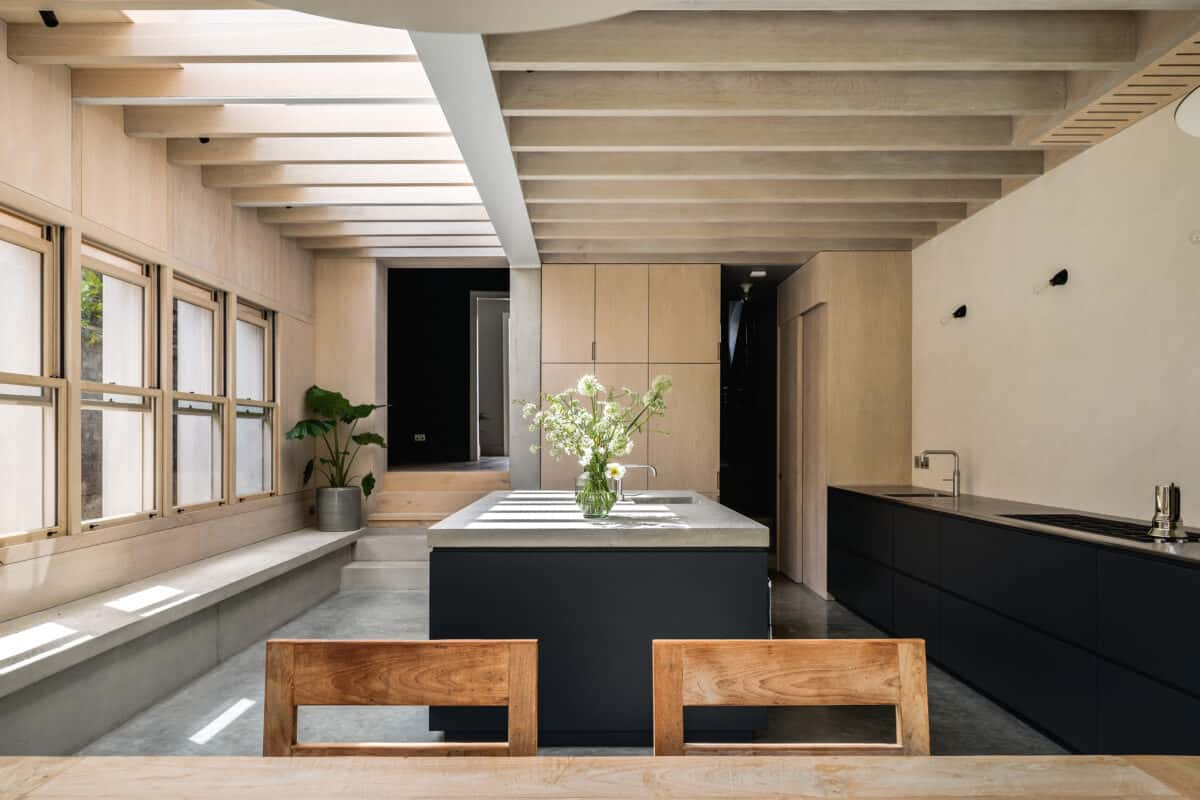
Roman: “The kitchen was very dark. It had very low ceilings and wasn’t very inviting. We hardly spent any time there.
“We set out to find an architect to help us with the renovation and design. We met with two or three before we came across Daniel Goodacre and Geraldine Ng of DGN Studio. We talked through what we wanted to achieve with them, which was to extend the kitchen and make it a lighter space.”
Rebecca: “They proposed a concrete datum that would go out into the garden – and we really loved the idea. They added an oak structure to the kitchen, which created lightness, lowered the floor and exposed the beams in the kitchen, which created ceiling height, and added roof lights and modern sash windows. It relates really well to the rest of the house – we have oak floors in the sitting room too.”
Roman: “They managed to open up the top floor, removing the ceiling and exposing the roof. And then they introduced us to different material palettes – it felt very collaborative and was a great learning experience. The materials are really harmonious.”
Rebecca: “We really like the hardness of the concrete with the warmth of the wood. We’ve got exposed aggregate as well so it’s a tough finish, which appeals to us. There’s so much detail in the materials – the knots in the oak, the cracks in the concrete – they have so much character.
“Since the renovation, we use all the rooms more. Before, we hardly ever went in the kitchen; now it’s where I spend most of the day – it’s quite serene. In the morning, the light hits the micro cement and plays on that, then it moves along the beams.”
Roman: “It’s a great place to host. We have these benches along the length of the kitchen, which have become areas where people naturally congregate.”
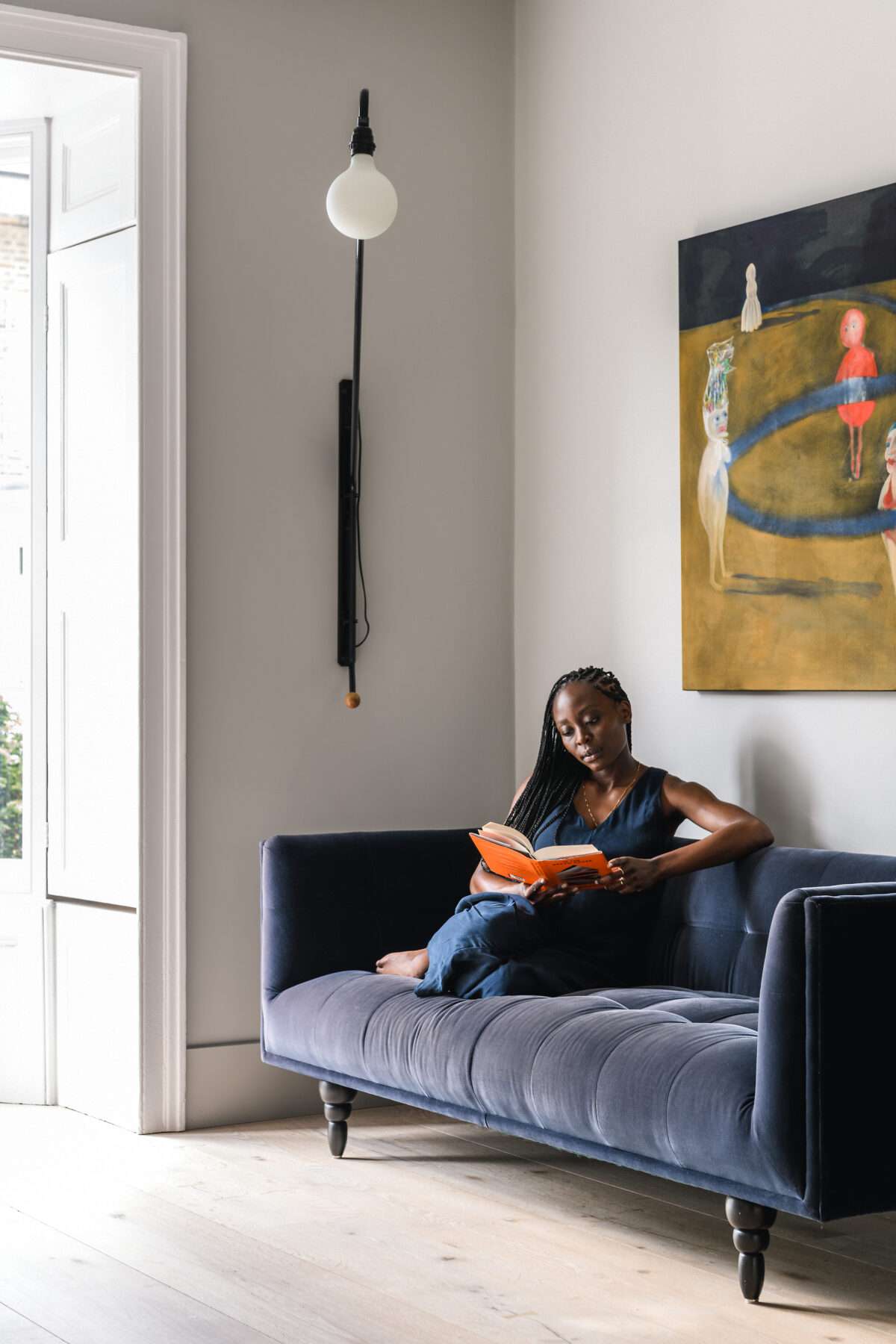
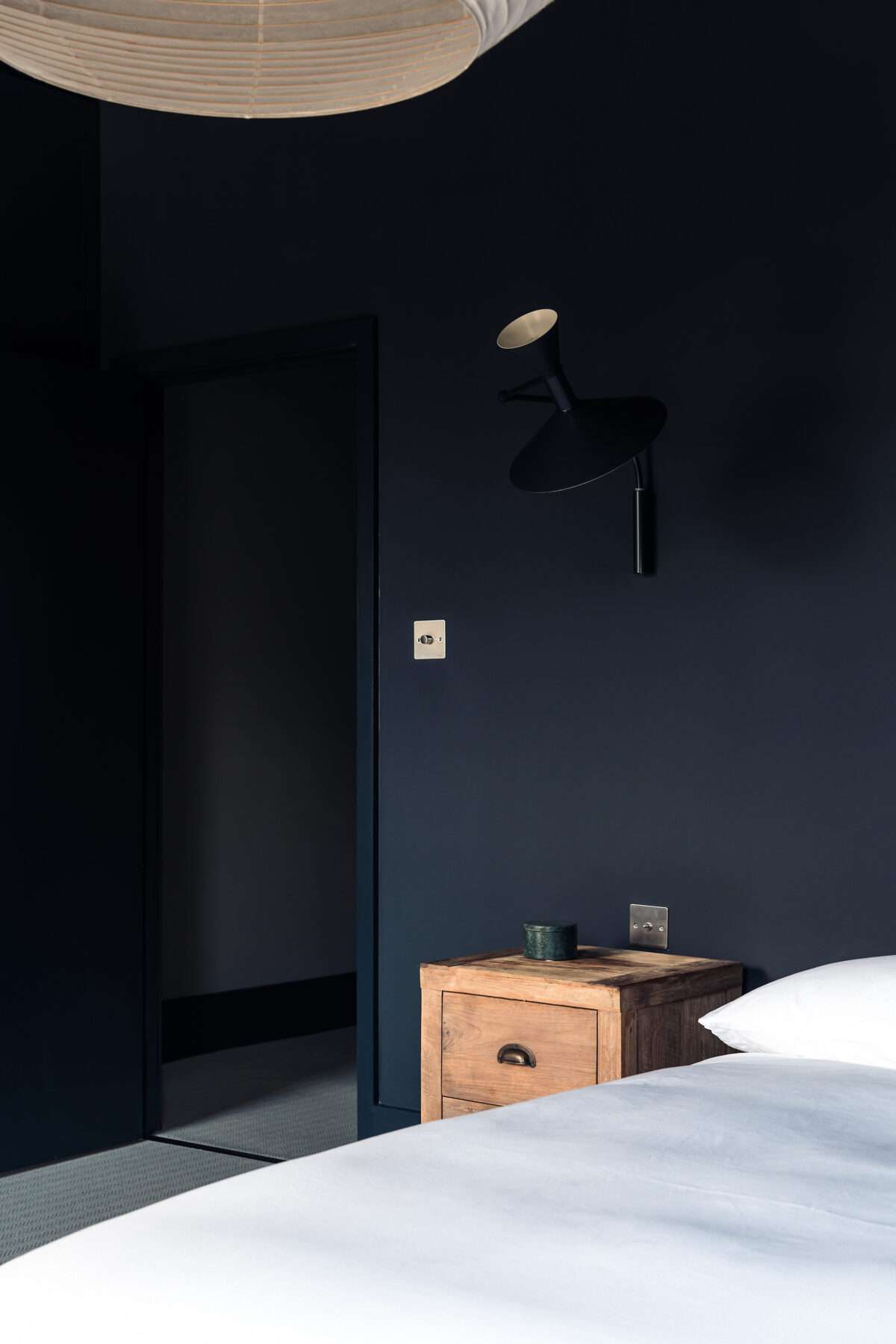
Rebecca: “The first thing people usually comment on is the light or the height of the beams. You don’t really expect it when you walk through the typically Victorian, narrow corridor. When you step into the kitchen, it gives you this sense of scale that is totally unexpected.”
Roman: “So far, we don’t have a lot of furniture and objects to display in the house. Our plan is to build that up gradually as we travel and come across things that we like. We still have a lot of that ahead of us. There are a couple of pieces of art that we’ve acquired recently from Bosse & Baum.”
Rebecca: “Mary Stephenson is the name of the artist. We have another piece from a friend, Gommie, that was in storage for four years and we finally managed to hang it up.
“We also have a really lovely library-like room, a snug. There’s a projector screen embedded in the ceiling and a bookshelf. We spend a lot of time there in the evenings.”
Roman: “Our favourite room changes over time. The other day I was walking around in the evening and suddenly I saw the full moon above me in the kitchen through the roof light. These are the moments when you discover new things.”
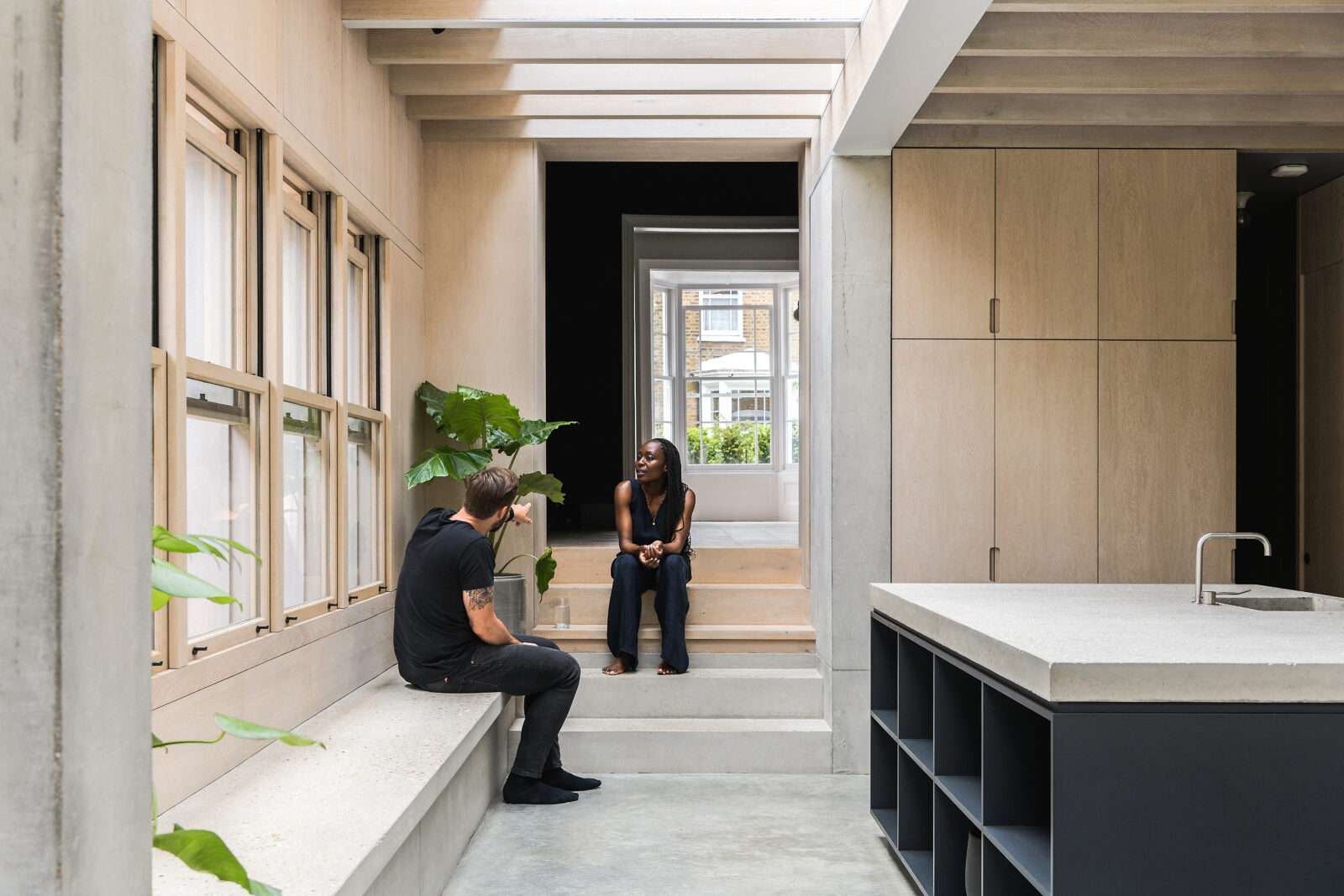
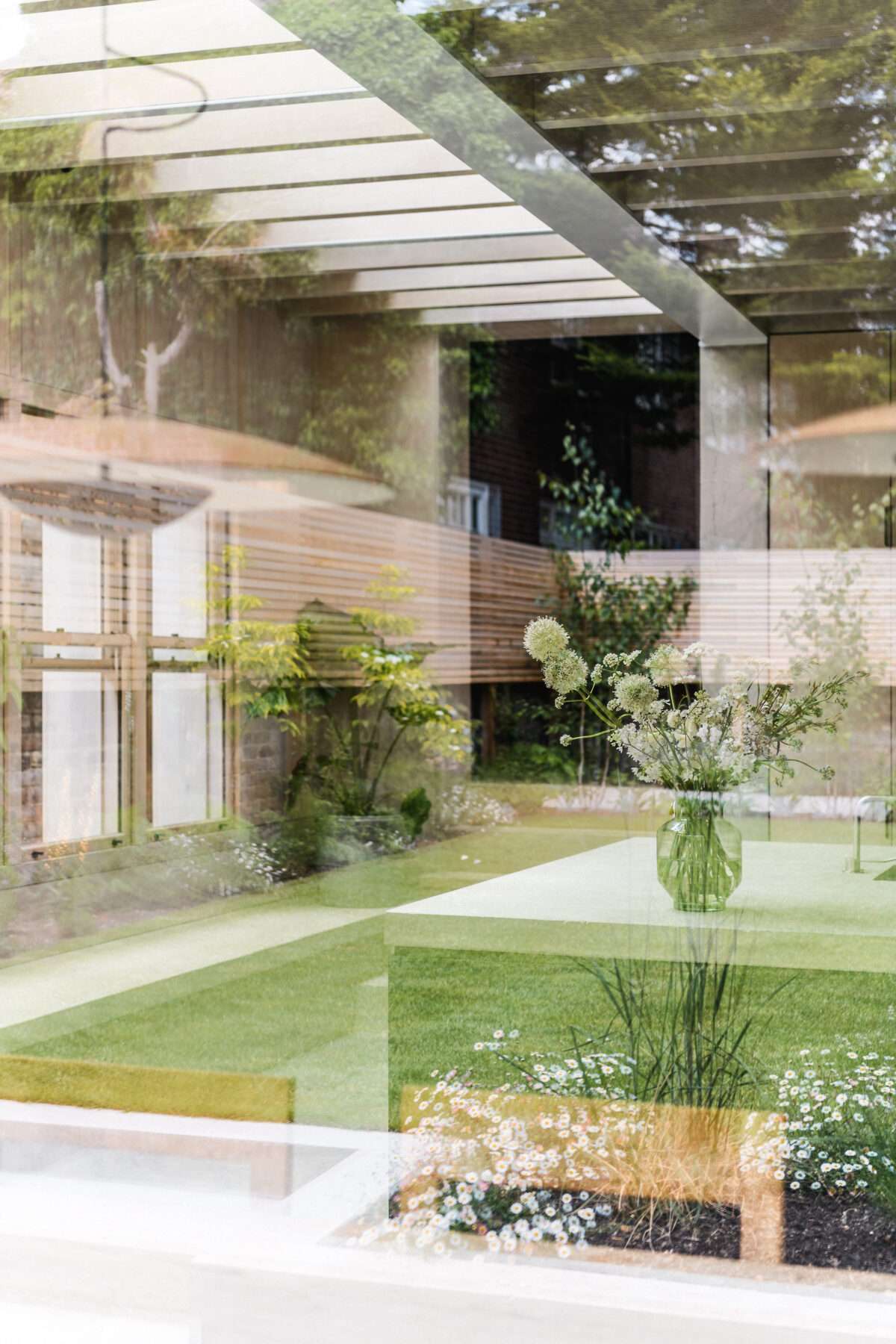
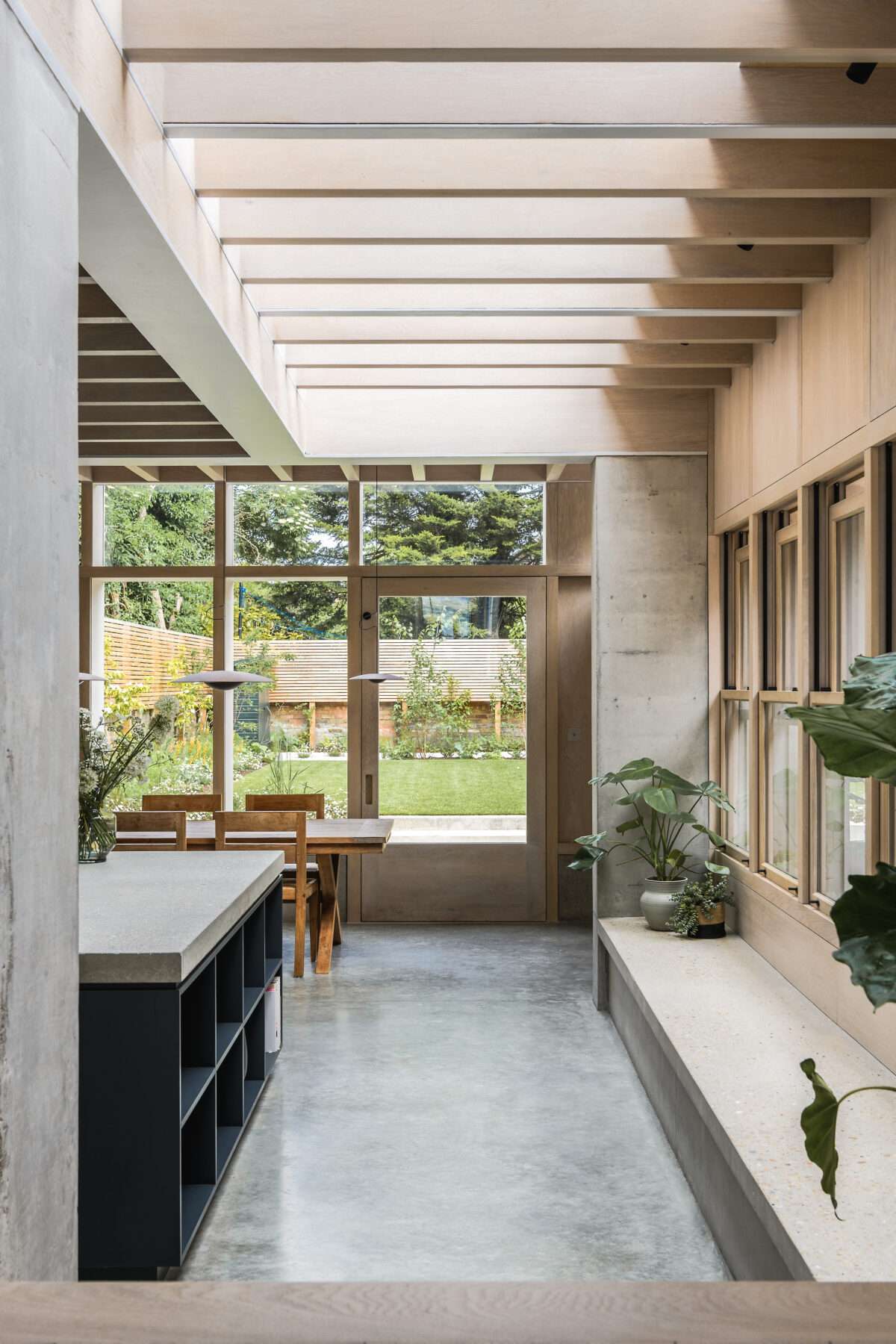
Rebecca: “We’ve got a great connection with the garden, which was designed with our friend and garden designer Sarah Alun-Jones. There are wide flowerbeds, lovely billowing grasses and meadow-like flowers.
“We’ve created a separate part at the back which is screened off with multi-stem silver birches – that’s the only shady part of the garden and it has woodland-like plants, like ferns. We’ve definitely got into gardening – it’s really meditative, watching the bees crawl into a foxglove; the birds and the squirrels.
“I think we’ll be here for a long time. We love the house and the area. We’re also expecting a baby… we’ll have to adapt the house – especially the extension, because there currently isn’t a lot of softness to it.”
Roman: “We’ll get lots of blankets! We’ll find a way to make it work. We can definitely see ourselves here for at least 10 years. Maybe more.”
How do you define modern living?
Roman: “To us, modern living is about creating spaces that manage to connect the old with the new, and have aesthetic appeal and functionality.”
Is there a home on The Modern House that has caught your eye recently?
Rebecca: “There’s been so many. This one sold a little while ago, but we keep coming back to Clerkenwell Cooperage. The scale is just incredible.”
Roman: “And it has that brutalist element in there.”
